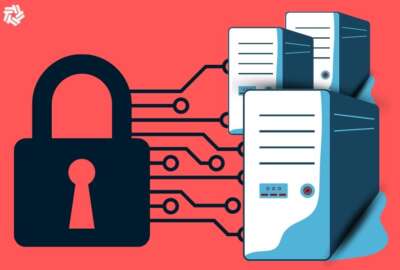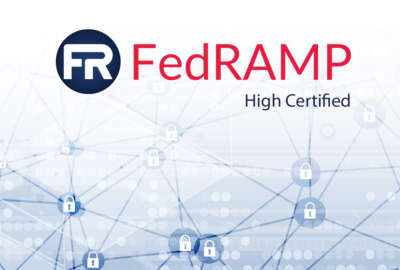Hubbard Radio Washington DC, LLC. All rights reserved. This website is not intended for users located within the European Economic Area.
Federal CIO Scott to pilot IT initiatives toward smooth landings
Tony Scott, the new federal chief information officer, said in his first public speech his priorities are to ensure existing administration technology efforts a...
wfedstaff | April 18, 2015 3:43 am
Tony Scott has learned at least one thing in the almost two months as the federal chief information officer: getting ongoing initiatives to the finish line is as important as starting new ones.
Scott, who is a pilot, made an analogy that federal IT is like flying a plane — everyone may like taking off, but landing is just as important.
And so goes a key piece to Scott’s philosophy as federal CIO.
He understands that the Obama administration has about 20 months left in office and he wants to continue down the same path as his predecessors:
- Driving value from IT investments
- Delivering on digital services
- Protecting federal technology systems and data
But Scott also wants to put his own stamp on these initiatives.
For example, Scott said there are three strategies for increasing cloud adoption that agencies need to consider. He said it’s not just a matter of lifting and shifting current apps into the cloud. 
The third area that Scott said is key to cloud adoption is turning off or getting rid of those applications or systems that will not survive the move to the cloud. He said agencies and companies usually are good at moving to the cloud, but tend not to take on the harder part of turning off those old systems.
Scott said the benefits of cloud are clear once an organization gets there — the agility and flexibility are the difference makers.
Rapid response, recovery to cyber attacks
Along with cloud, Scott said he will continue the PortfolioStat and TechStat reviews to improve the efficiency and effectiveness of agency IT infrastructures.
Underpinning all of this, of course, is cyber.
Scott said he recognizes the importance of cyber as he recently struggled to hire a chief information security officer when he was CIO at VMWare.
Scott said cyber is the biggest growth area for all of IT.
“One of my focus areas there is to look horizontally across all the different silos of cybersecurity that are typically found in an organization and focus on the end-to-end effect of all of the things that we are doing,” Scott said. “And also focus more on how do we have rapid response and recovery as opposed to just prevention of bad things?”
Scott said the reinvigorated E-Gov Cyber Unit will be leading that silo smashing effort. That unit, led by Deputy CIO Lisa Schlosser, is working with agencies across three main areas: oversight, operations and implementation.
Workforce, breaking down silos
While Scott didn’t announce any new programs or plans for new programs, there are two areas that will garner a lot of his attention.
Scott came back to the need to improve the federal IT workforce and the importance of breaking down silos several times during his speech.
While the administration’s goals continues to be to bringing the best talent into the government, Scott said it’s also part of the way the government has to change to create a new citizen experience.
“Our focus thus far has been on consumer facing, citizen facing, scale, most impactful digital services of the federal government,” he said. “But we’re also going to probably expand the talent in that organization to focus on some core infrastructure areas and anywhere where we need rapid change and the best talent we can find to address the challenges we have going forward. The digitalization process I have found is an interesting journey from beginning to end. Simply said, it’s the next step beyond automation. It’s reimagining how we deliver the intended results of the organization. So I really look forward to both growing this digital services team, but also integrating it in the very fabric of the IT organizations and the agencies.”
Scott said having a skilled and qualified workforce reinforces all of his other priorities. To that end, Scott, through the CIO Council, launched the IT Solutions challenge earlier this month to bring together employees in the General Schedule grade level 9-to-13 to work on specific governmentwide IT challenges.
And part of having that skilled workforce is being able to break down existing silos.
He said that means figuring out the best way to be efficient and effective when it comes to IT programs meeting mission needs.
“Giving CIOs a dollar target is often the wrong thing to do. All of us will have had this experience, but if you give us a dollar target we will figure out how to cut costs in the short run, but perhaps not drive sustainable value in the long run,” Scott said. “What will happen in many cases is we will stop buying, stop spending or investing on the new technologies that we need to really make a difference. So what I prefer is rather than giving a dollar target, I prefer giving goals that ensure that we are investing in the right set of things so that we have a brighter future ahead of us rather than having to play catch-up when we inevitably find ourselves behind the eight ball.”
Workforce and silo breaking also are part of agency-specific priorities.
Every agency is starting to see or already is seeing a workforce crisis. The slow but steady retirement wave is taking its toll on agencies and forcing them to react.
Mentoring, training at USDA, DoT
At the Agriculture Department, 30 percent of its workforce is eligible to retire in the next two-to-three years.
Joyce Hunter, the acting CIO at USDA, said her office is doing to two things to address the workforce challenges. The first is taking advantage of the phased retirement program.
“They are able to phase in their retirement over time so that we can do a transfer of knowledge,” she said. “The second is an IT fellows program, which takes our best and brightest [GS] 12s, 13s, 14s and puts them through a rigorous year-[long] program where they work on integrated teams so now the agencies are working together on projects where as they originally had been separated in to separate silos, nobody knew what the other was doing so now there is a lot of collaboration between them. We are heavily investing in this particular program so we can keep our new folks, we can keep maturing our traditional folks and we can recruit those people from industry into the USDA.”
Over at Transportation, Richard McKinney faces a different type of challenge when it comes to his workforce.
The CIO said it’s not so much about retirements, as it is about having the right skillsets.
McKinney said he’s building up his headquarters staff to offer up commodity enterprisewide shared services to the rest of the bureaus.
“I’ve been saying since the day I walked in the door that IT is a team sport,” he said. “It’s about the people that you have. It’s about the teams that you build. It’s about the conversations that you have. I set about to strengthen the office of the CIO by bringing in talented folks. I hired a chief technology officer, Maria Roat, elevated my deputy Kristen Baldwin, hired a chief data officer, elevated the chief geospatial officer in the department, got a new shared services director, and got a new policy and governance team. I’m really excited about what’s about to happen because now, I’m ready for their business. I told the [bureau CIOs] the other day — I had a meeting with them — I said one of the things about Federal IT Acquisition Reform Act (FITARA) and how I’m going to use that authority is you all are getting out of the IT business.”
McKinney said that means the bureaus CIOs will no longer have to worry about networks, storage, compute power and the like. Instead, he said he wants them to work only with their business and mission owners at the solutions layer to bring IT to solve mission challenges.
McKinney added his goal is to create a renewed sense that the customer comes first and they are all working together to solve the agency’s challenges.
RELATED STORIES:
White House names VMWare’s Tony Scott as federal CIO
OMB reaffirms cyber oversight role
CIO Council in search of GS-9-13s for IT Solutions Challenge
DoT’s move into shared services buoyed by better trained IT workforce
Copyright © 2024 Federal News Network. All rights reserved. This website is not intended for users located within the European Economic Area.
Jason Miller
Jason Miller is executive editor of Federal News Network and directs news coverage on the people, policy and programs of the federal government.
Follow @jmillerWFED
Exclusive
Artificial Intelligence
Read more





